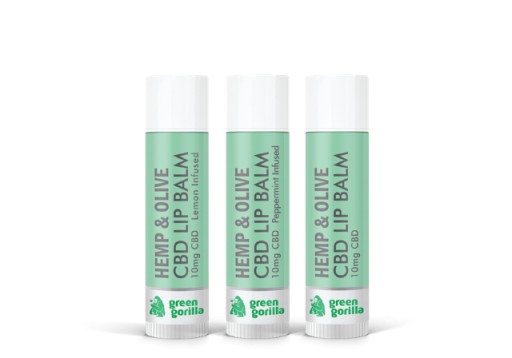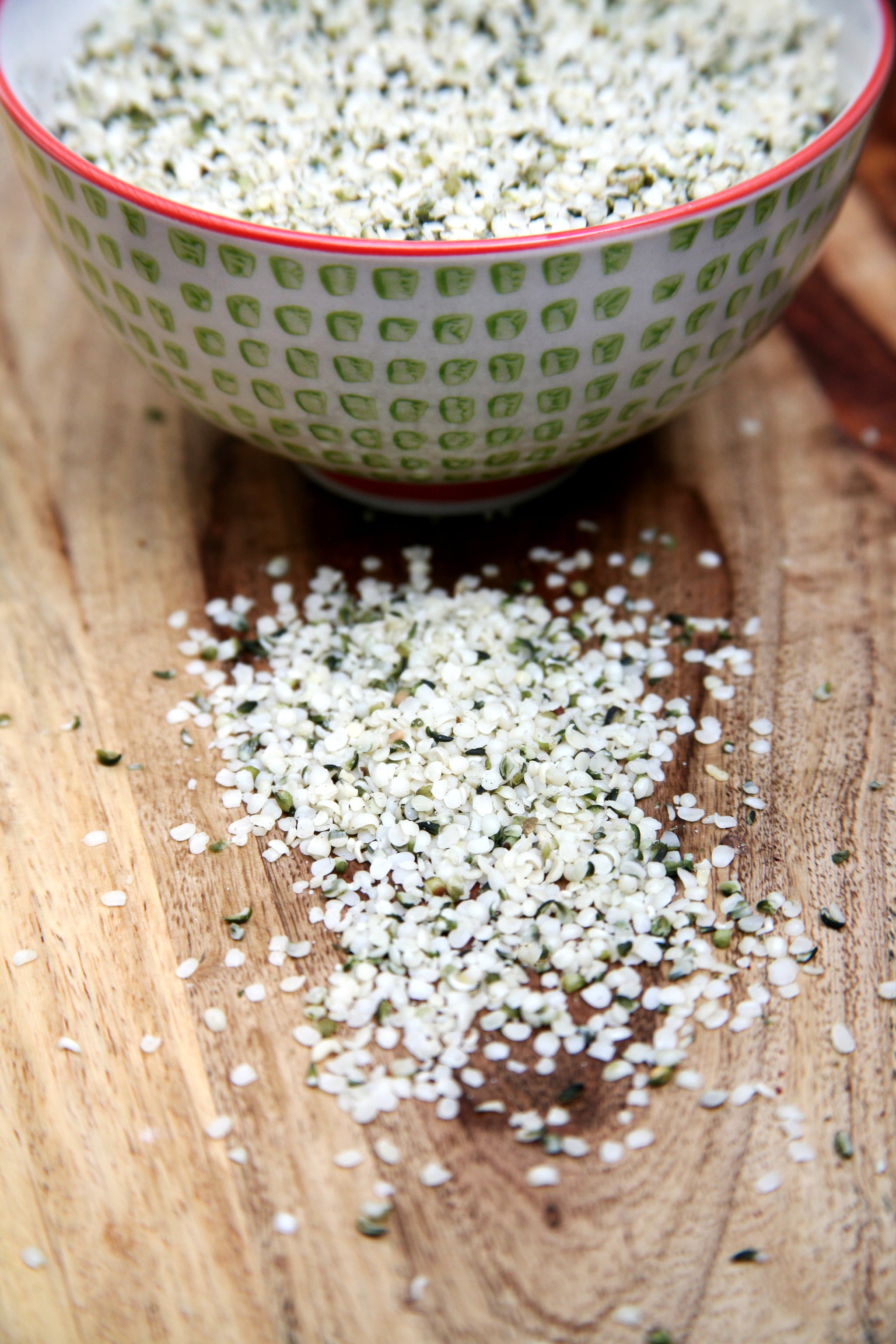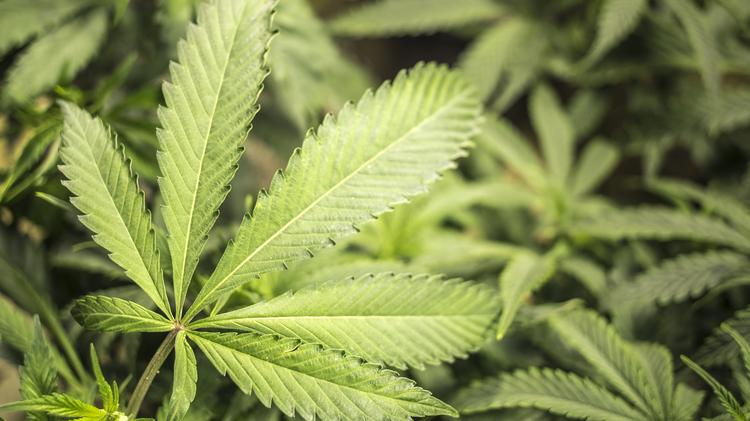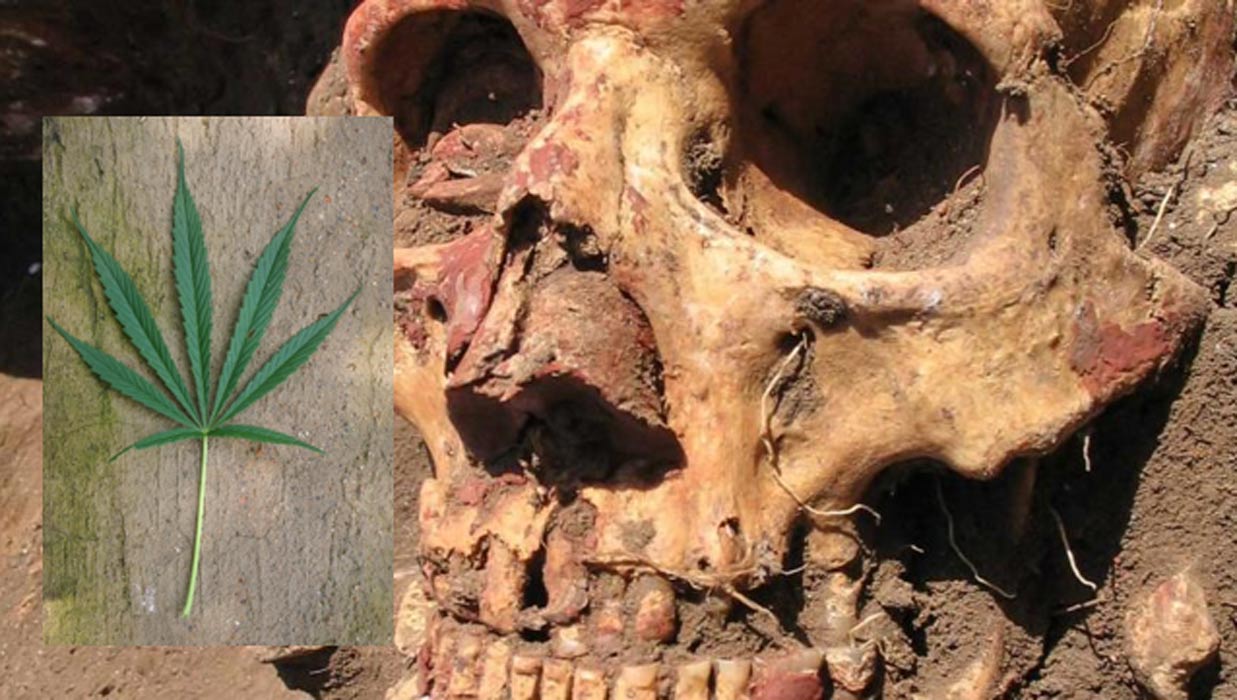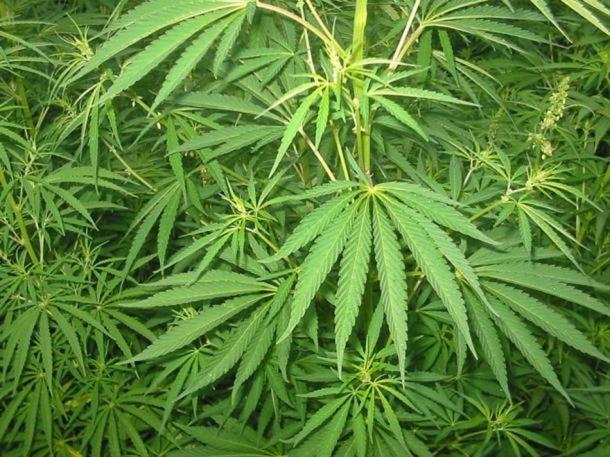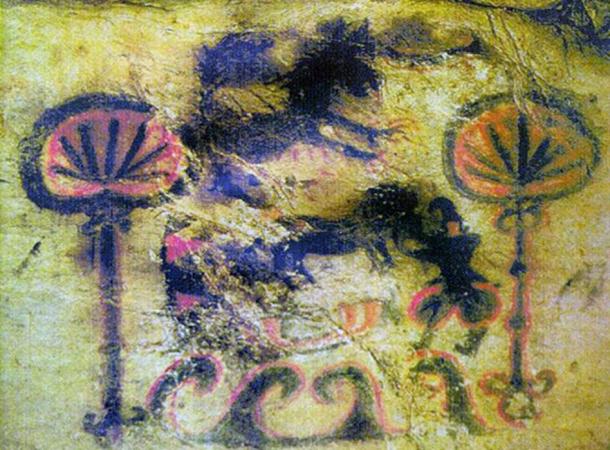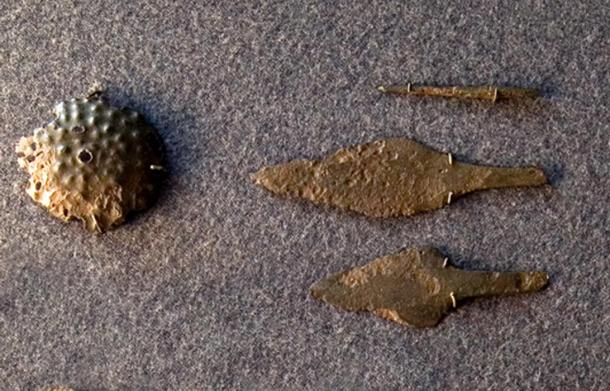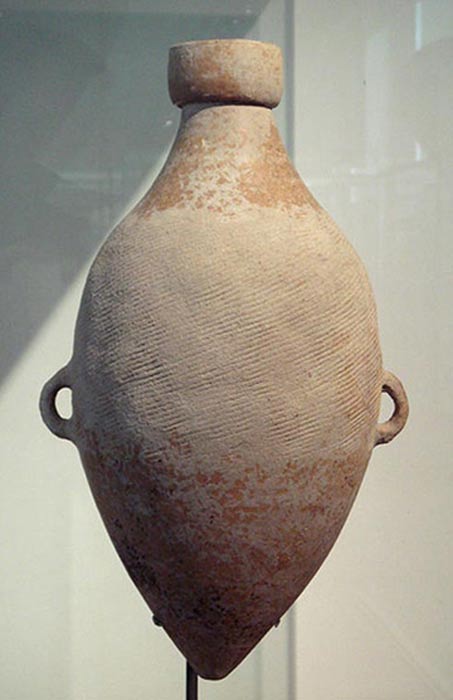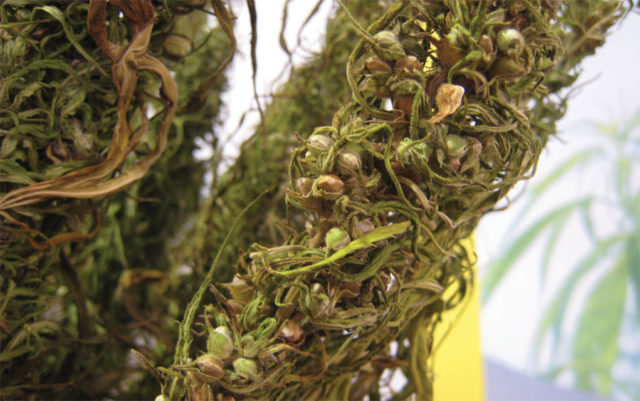By
Catherine V. Moore
Source:
yesmagazine.org
As tobacco declines, some hope that hemp can be a “gateway crop” to financial sustainability for the state’s small farms.

At the birth of any industry, uncertainty abounds. So does opportunity, say Kentuckians like Joe Schroeder of Freedom Seed and Feed, who is among those growing industrial hemp and advocating for others in Appalachia to do the same.
“It’s really speculative,” says Schroeder. “But people are making a lot of money, and that money is real.”
Hemp was so important to early America that colonists in Virginia were required to grow it.
But don’t take that talk of money to mean Schroeder is greedy. At a time when the region’s collapsing coal and tobacco industries have left gaping holes in central Appalachia’s economy, at least some of Kentucky’s hemp experimenters want to maximize the benefit to as many local people as possible.
Hemp was so important to early America that colonists in Virginia were required to grow it. A short boom during World War II notwithstanding, the shift to cotton and the anti-marijuana movement put an end to the industry by the mid-20th century. But in 2014, a new farm bill cleared the way for states to begin research-driven pilot programs to test the crop’s viability in producing fiber, medication, and food. Twenty-seven states, including Kentucky, have passed their own pro-hemp legislation so far. And yet the plant remains a Schedule I controlled substance, in the same category as heroin, LSD, and bath salts.
That’s why Jane Herrod feels like she’s starting from scratch, even though hemp was grown on her family farm near Lexington, Kentucky, as far back as the early 1800s. Hemp may be rife with legal contradiction, but things don’t appear so complicated this afternoon at her farm. The cows graze. The Kentucky River flows. And Herrod, a middle-aged woman with close-cropped grey hair and a deep tan, looks out across her pastureland with obvious joy. She loves this land, and she’s not giving up on it.

Jane Herrod hopes that high-value CDB oil will help her small farm turn a profit. Photo by Catherine V. Moore.
Kentucky is home to a vast patchwork of small former tobacco farms like Herrod’s. Beginning in the 1930s, a system of quotas and other price supports from the federal government made tobacco a pretty secure crop to grow, even on a small number of acres. But all that came to a halt in 2004, when these tobacco-friendly policies were discontinued. A payment system was set up to assist tobacco farmers until they could figure out a replacement crop, but that ended in 2014. Now, with smoking in decline and imported tobacco on the rise, the industry is down to less than a quarter of its size a few decades ago. But the land, much of the infrastructure, and at least some of the farmers are still there.
Hemp advocates hope that reintroducing the crop will help farmers like Herrod keep her 10 tillable acres in production and make money too. But whether and how hemp can justify itself financially on a small farm are open questions and critical ones for Kentuckians to answer if they are to significantly benefit from the potential new industry.
Last year, Herrod hosted a small test plot of hemp on her land, and now she’s applying to grow two acres of the plant for cannabidiol (CBD) oil, one of the highest-value hemp products being tested. The oil is used to treat epilepsy and has shown potential for Crohn’s disease, cancer, and autism. She and other growers and processors must go through a lengthy permitting process run by Kentucky’s agriculture department and the Drug Enforcement Agency. This year, 166 applications were approved in the state.
Though she doesn’t expect to get rich, Herrod believes the high-value CBD oil could bring in enough income for her to start building other enterprises and investing in infrastructure on her farm so that she can pass it on to her kids as the income-generating business it used to be. For this reason, some are describing hemp as a “gateway crop” that could help keep family farms viable.
Another strong motivator for Herrod is the opportunity to grow something that heals and feeds people instead of poisoning them. Herrod’s mother, who passed the tobacco farm down to her daughter, died of lung cancer caused by the very crop she raised. Edible hemp seed, on the other hand, packs in omega-3s and -6s, nutritious oils that facilitate healthy nerves. And its flowers contain a host of biochemicals that are being tested for medicinal uses. For all these reasons, Herrod says she’s ready to turn over a new leaf.
“There’s not a negative thing about the plant that I can see, other than you might not be able to make money with it,” Herrod says, laughing. “But I’m going to find out.”
The plant remains a Schedule I controlled substance, in the same category as heroin, LSD, and bath salts.
Hemp is defined in the farm bill as cannabis that’s less than 0.3 percent THC content by weight. THC, of course, is the psychoactive chemical in marijuana, which contains 10 percent THC on average.
It’s easy to see why boosters describe hemp as a kind of miracle plant. It’s a sector filled with a certain amount of utopian thinking, especially from marijuana legalization advocates. But not all of the boosters are partaking. A 1998 study by North Dakota State University estimates that hemp has 25,000 uses, which include food, green building materials, textiles, paper, fuel, body care products, and as a replacement for plastic and fiberglass. BMW even used it in the door panels of its new electric car.
That’s why farmers in China and Europe have been growing hemp for decades. But in the United States, the federal government still considers it a narcotic. And that makes it harder to find buyers, get insurance, and obtain seed.
A flier for prospective hemp growers put out by the Kentucky Department of Agriculture warns that “markets are limited; revenues should not be counted on.” Likewise, a report by the Congressional Research Service last year said it’s impossible to make predictions about sales and employment. Still, the same report describes a “mostly positive market outlook” for hemp, citing “rising consumer demand and the potential range of product uses.”

YES! Infographic by Jennifer Luxton.
Right now, how much a farmer can make on hemp depends on what they’re growing it for, and whom you’re asking. Hemp is grown mainly for its fiber, seed, or flowers. The fiber is most often used in textiles or building materials, while seeds are made into nutritious oil, snacks, or livestock feed. Flowers are harvested for pharmaceutical products, including CBD oil.
A 2013 economic study on hemp by the University of Kentucky assumes that farmers can get between 50 and 80 cents per pound for seed. Freedom Seed and Feed, on the other hand, reports getting $12 per pound for the protein-rich, organic hemp seed they sell to a local granola maker.
Meanwhile, the Hemp Industries Association estimates that Americans purchased $620 million in hemp products in 2014. China is America’s biggest supplier of fiber, while Canada provides most of the seed and oilcake (a byproduct of pressing hemp seeds for oil).
Since there’s more money in seed and oil than in fiber, Canada will likely be the major competitor for U.S. hemp farmers. Canada legalized hemp in 1998, so farmers there are now 17 years ahead of American ones.
What kind of money are those Canadian farmers making? According to the Canadian Hemp Trade Alliance, the average hemp grower earned about $550 per acre, annually, for seed. That’s about half of what Kentucky farmers are expecting to earn.
But a huge industrial farm growing oilseed in Canada for a commodity market looks a lot different than Big Switch Farm, nestled in a sloping valley in Jackson County, Kentucky, where Joe Schroeder is harvesting his last sliver of a hemp test plot on a shimmering October morning. His Ray-Bans and blue flannel shirt conceal a farmer’s tan as deep as Jane Herrod’s. The crucial question for both hemp-curious farmers: How small is too small?
Running a chainsaw across a swath of rangy hemp plants, Schroeder is right in the middle of trying to figure out just that. He seeded his test plots at different rates of density to study which ones maximized yield and, more broadly, the economics of growing hemp seed for food and fiber on a small scale. His permit is for five acres, which 18 straight days of rain and one pesky groundhog have not helped.
Schroeder is chief operating officer of Freedom Seed and Feed, one of a handful of private, “values-driven” companies to crop up in the Kentucky hemp play. The company works with nontraditional farmers in the Amish community, who grew 60 acres last year, some in high-CBD varieties. Meanwhile, Schroeder’s business partner, Mike Lewis, is working to turn Kentucky’s war veterans into hemp farmers.
“I have an aspirational approach to the market,” says Schroeder. “A lot of this is about the market you make.”
“There’s not a negative thing about the plant that I can see, other than you might not be able to make money with it.”
Freedom Feed and Seed's business model is based on differentiating itself from commodity-based agriculture, which produces high volumes of raw product. Instead, Schroeder’s company is catering to specialized buyers and developing products that fetch higher prices. It simply doesn’t make sense, Schroeder’s logic goes, for a former tobacco farmer on five acres in Kentucky to compete with a grower on a thousand acres in Canada.
The fact that the industry’s in its infancy creates additional opportunities. “We’re going to be able to push for a standard that farmers can survive at,” says Schroeder. “If they get rich too, then that’s a consequence we could deal with.”
One way to ensure farmers get their fair share, Schroeder believes, is to organize cooperatives modeled on those that existed in the tobacco era. These structures offered farmers collective control over who to sell to and at what price, in addition to lowering the cost of production through shared infrastructure and group purchasing. That kind of advocacy is exactly what hemp farmers need to navigate an emerging market, says Schroeder.
The industry may also be able to get help from Washington, D.C. Federal funding is now available to support struggling, coal-reliant communities in Appalachia. Why not use some of this money to, for example, build a hemp processing plant in the layoff-riddled coal country of eastern Kentucky, putting people to work and capturing more of the plant’s value within the region?
Some relatively established companies, like GenCanna Global, are already investing in Kentucky’s fledgling industry.
“What we’ve decided to do at GenCanna with our farmers is make them partners,” says Chris Stubbs, GenCanna’s chief science officer. “They are going to participate in the value chain all the way through.”

Mike Lewis, Joe Schroeder, and Lora Smith hold an American flag made entirely from U.S.-grown hemp. Photo by Catherine V. Moore.
In that profit-sharing partnership, GenCanna brings its technical knowledge, materials, and investment. The company has in some cases paid farmers’ rent, covered the expense of retrofitting their operation to grow hemp, and even cut their payroll checks. The growers bring their local knowledge, land, and existing infrastructure. Both parties learn from each other and share in the profits. The net result, says founder and CEO Matty Mangone-Miranda, is an acceleration of the industry and a move away from existing agriculture models in which the farmer is used and underappreciated. GenCanna estimates that the company touches a couple hundred people at all levels, including everyone from production managers and seasonal workers to research scientists. Mangone-Miranda expects to work with more than 30 farms this season, ranging in size from three to 130 acres. The small scale of the farms in Kentucky, compared to the average commodity-growing farm, means the company will be able to pay more attention to detail, which in the long term will translate into higher quality—like a microbrew, says Mangone-Miranda.
But that would be a microbrew that’s classified as a Schedule I narcotic. When you ask Kentuckians what they need to make hemp a success, their first answer is always to take the plant off the federal list of controlled substances. That’s exactly what the Industrial Hemp Farming Act of 2015 would do. Its supporters include both Bernie Sanders and Sen. Mitch McConnell, a Kentucky Republican, as co-sponsors.
The bill was introduced in the Senate last year and now sits in the judiciary committee, awaiting further action. The five-year window opened by the 2014 farm bill for hemp experimentation will expire in two years. At that point, congress will renegotiate a new farm bill, and anything could happen.
Last year, Freedom Feed and Seed helped produce an American flag made out of American hemp by American hands, a project they say is a metaphor for what they’re trying to do: extend the American dream of honest pay for honest work to people who have long been left out. The collaboration called on artisans, textile producers, veterans-turned-farmers, and private and nonprofit partners throughout the tobacco belt and beyond. The flag flew over the stage at the 2015 Farm Aid concert as a reminder of America’s grassroots production power. As a prototype, it was one of a kind and absurdly expensive to make. But as a talking point for the potential rebirth of an industry, it served its purpose.


